Ready to go beyond your climbing gym? Meet Southern California’s rock stars
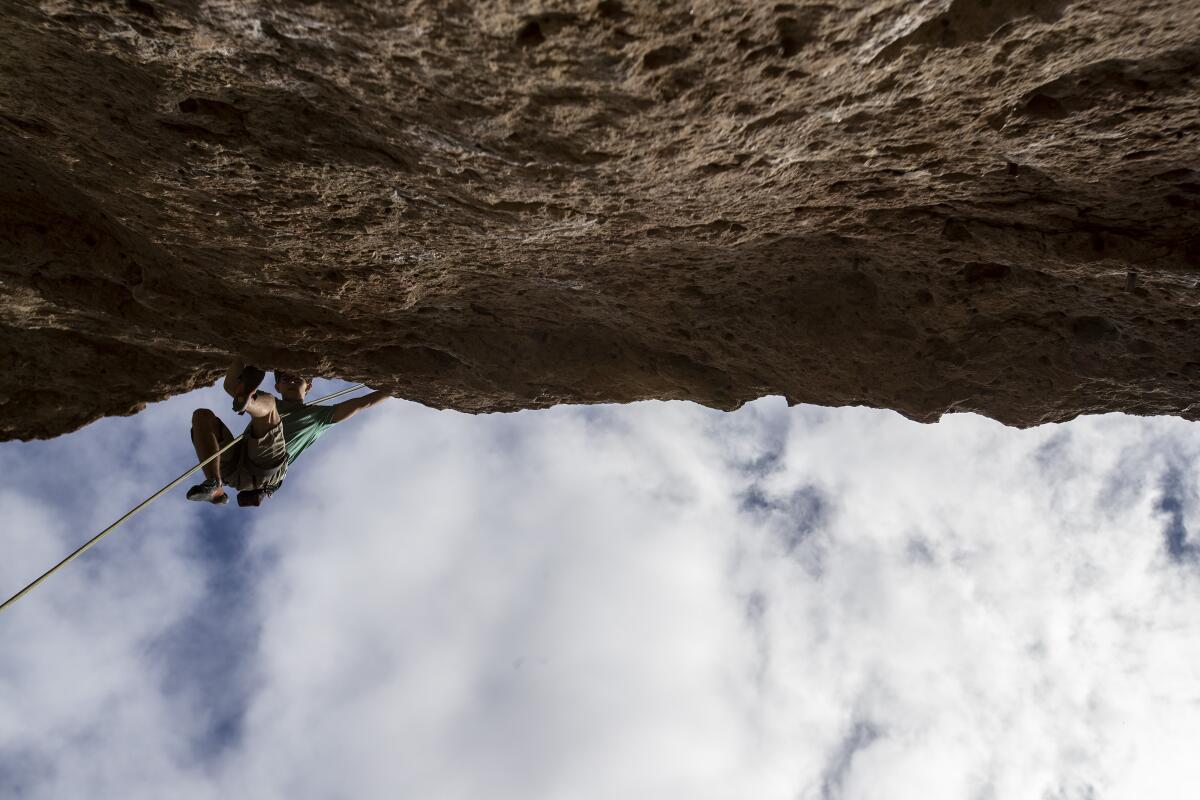
- Share via
The fleeting sight of Stoney Point, a collection of flaky sandstone boulders north of Los Angeles, spurred a teenage Royal Robbins to hop off a freight train and get climbing. It was the ‘50s, and the legendary rock climber saw his destiny in those cliffs.
“I went there often because I could picture the future, which was big mountains, and this was a way of getting to the big mountains,” Robbins told an outdoors writer during a return visit in 2012. “And so I would go to Stoney and develop myself, develop my strength and my abilities in ways I never knew I could do.”
Robbins, who grew up in Southern California, went on to pioneer ascents on many big-wall routes, including Yosemite’s Half Dome and El Capitan in the 1960s.
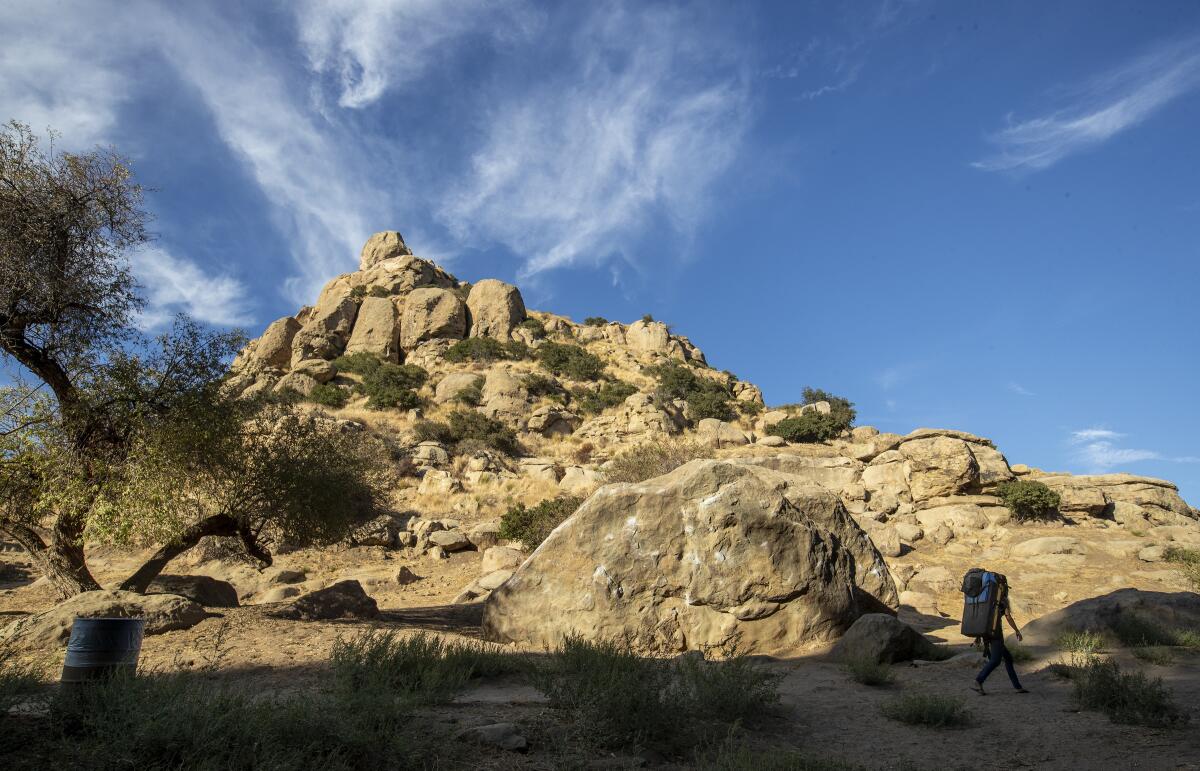
Stoney Point, more than half a century later, despite the graffiti and broken glass, continues to awaken and inspire new generations of rock climbers, now drawn from cushy indoor gyms rather than passing trains.
Climbing book author Damon Corso, 39, understands the allure of the rocks — and the value of learning bouldering, top-roping and lead climbing in a safe, indoor setting.
“Go to a gym, see if you enjoy it, rent the equipment, get instruction for cheap, and then take your skills outdoors,” says Corso, who taught his wife to climb indoors. “You can probably make the transition outside quickly.”
Fabi Chillino grew up in the flatlands of western Germany and didn’t touch real rock until he had three years of climbing on plastic handholds indoors under his belt. Now he’s a professional climbing guide based in San Diego who takes climbers on routes from Joshua Tree to the Sierra.
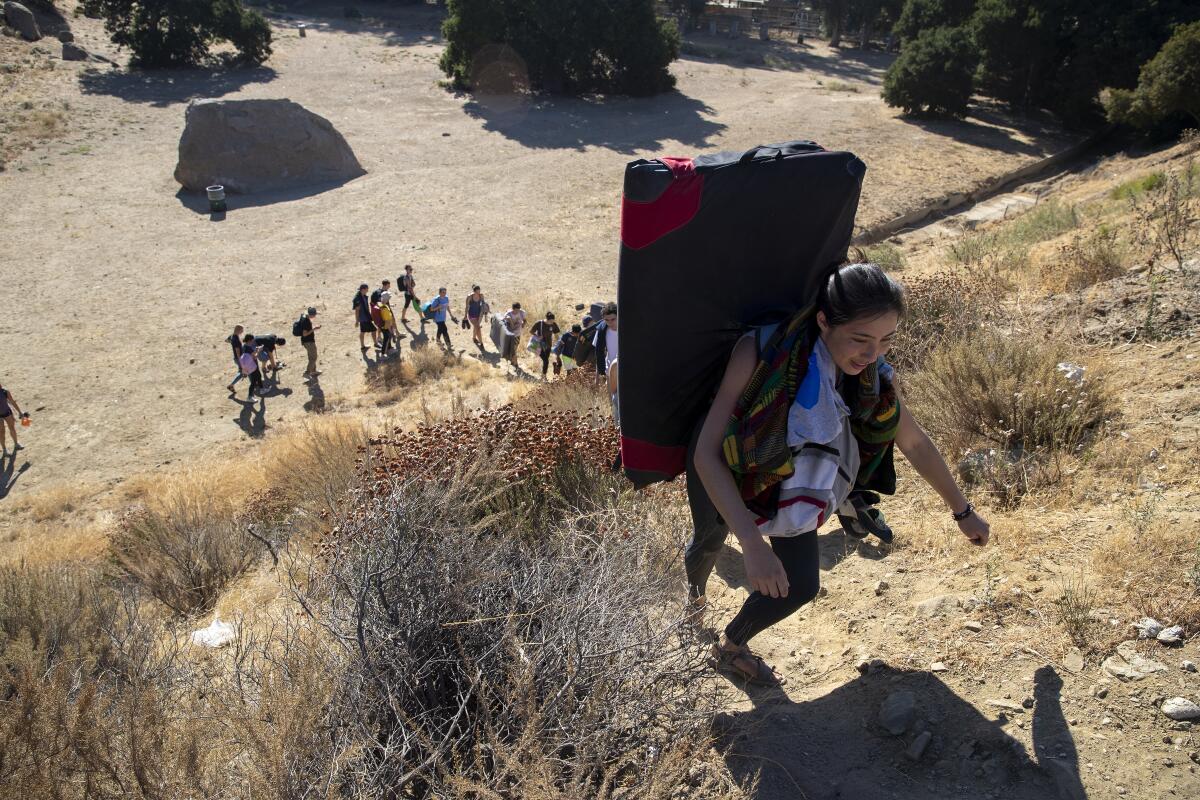
“I still go to gyms to train,” Chillino says. “But getting outside in the sun on real rock is what I love to do and share with others.”
Here are a handful of Southern California’s outdoor hot spots that offer good starter routes for beginners and challenges for experts. You can go with a group or a guide, or take a class with a pro.
Chatsworth
Stoney Point Park is L.A.’s go-to outdoors gym for climbing with ropes and bouldering without ropes. The beginner boulders are relatively small (around 15 feet tall), and climbers usually place crash pads on the ground to cushion falls.
The rock is sandstone, which Corso said can be flaky and prone to breaking off for several days after it rains. A classic starter climb here is the Three Pigs route on the popular Boulder 1, where crowds gather most days of the week. Kodas Corner and Powerglide are less crowded but more difficult routes.
Info: Stoney Point Park (laparks.org/park/stoney-point) is on Topanga Canyon Boulevard between Chatsworth Street and the 118 Freeway. Look for Boulder 1 on the left as you enter the gate; other climbing routes are farther inside the park.
Calabasas
Malibu Creek State Park in the Santa Monica Mountains has a rich cinematic history, providing a dramatic backdrop for movies such as “Butch Cassidy and the Sundance Kid” (1969) and 1970s TV shows “Planet of the Apes” and “MASH.” Most of the land for the state park was donated by Bob Hope, adding later purchases from then-actor Ronald Reagan and 20th Century Fox.
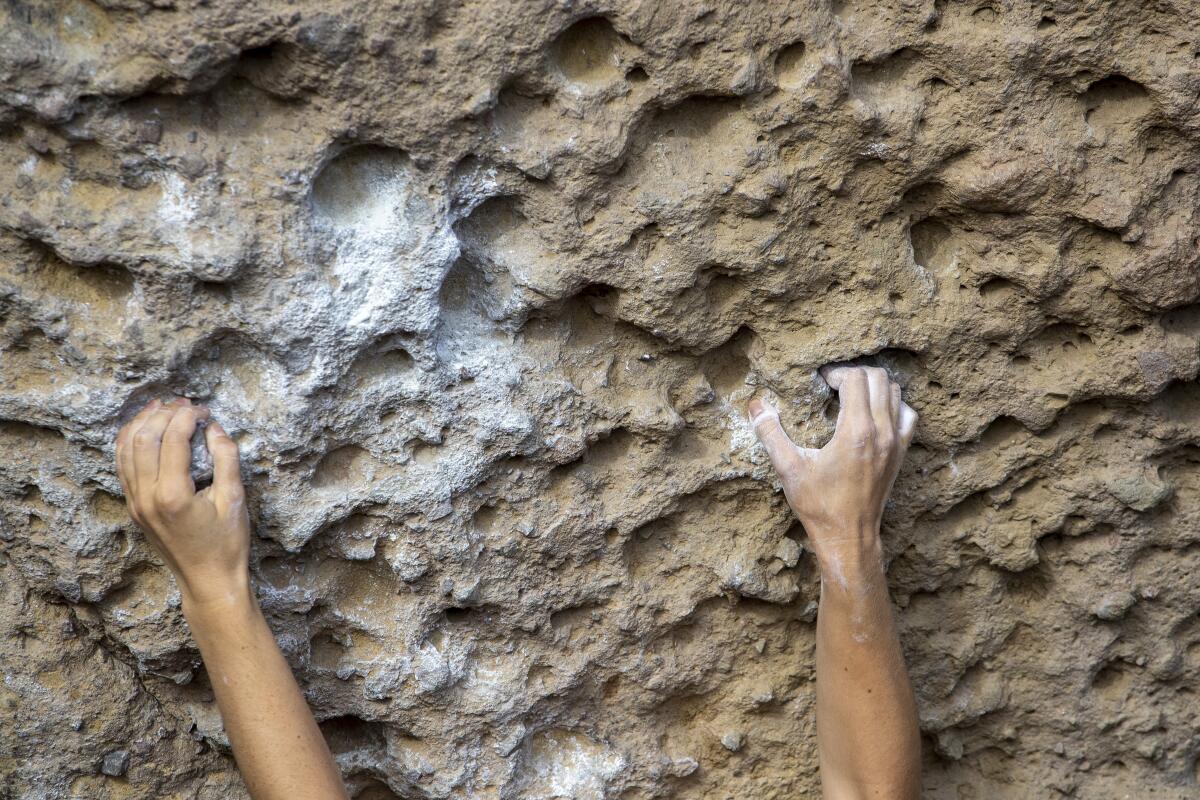
From the top of the rocks, you’ll take in sweeping views of the surrounding mountains all the way to the Pacific Ocean. A good warm-up climb is a route called Chopping Block, which you’ll find just beyond the main creek crossing in what’s called the Stumbling Blocks area. This relatively gentle ascent of 75 feet starts atop a large tumbled block. You’ll find a good midrange climb, Planet of the Apes, on the wall of the same name, which also rises about 75 feet.
If you really want to test your mettle, go to the difficult Ghetto Blaster route on the Ghetto Wall, a 60-foot ascent that starts on a steep apron of rock and leads to a good under-cling hold (imagine lifting a table) for moving laterally and then ascending.
Info: Malibu Creek State Park (malibucreekstatepark.org), 1925 Las Virgenes Road, Calabasas; parking costs $12 per day. Expect to walk to climbing spots; it’s about a three-quarter-mile hike from the parking lot to the rocks.
Malibu
Point Dume State Beach is one of the most scenic places to climb in L.A. County. It’s a volcanic monolith with some conglomerate sprinkled in that juts out from the Malibu coast and rises about 70 feet above the ocean and a sandy beach. Novices and intermediates come because it’s a great place to learn the basics of roped climbing. The rock face can get crowded on weekends, however, so a midweek visit may be a better idea.
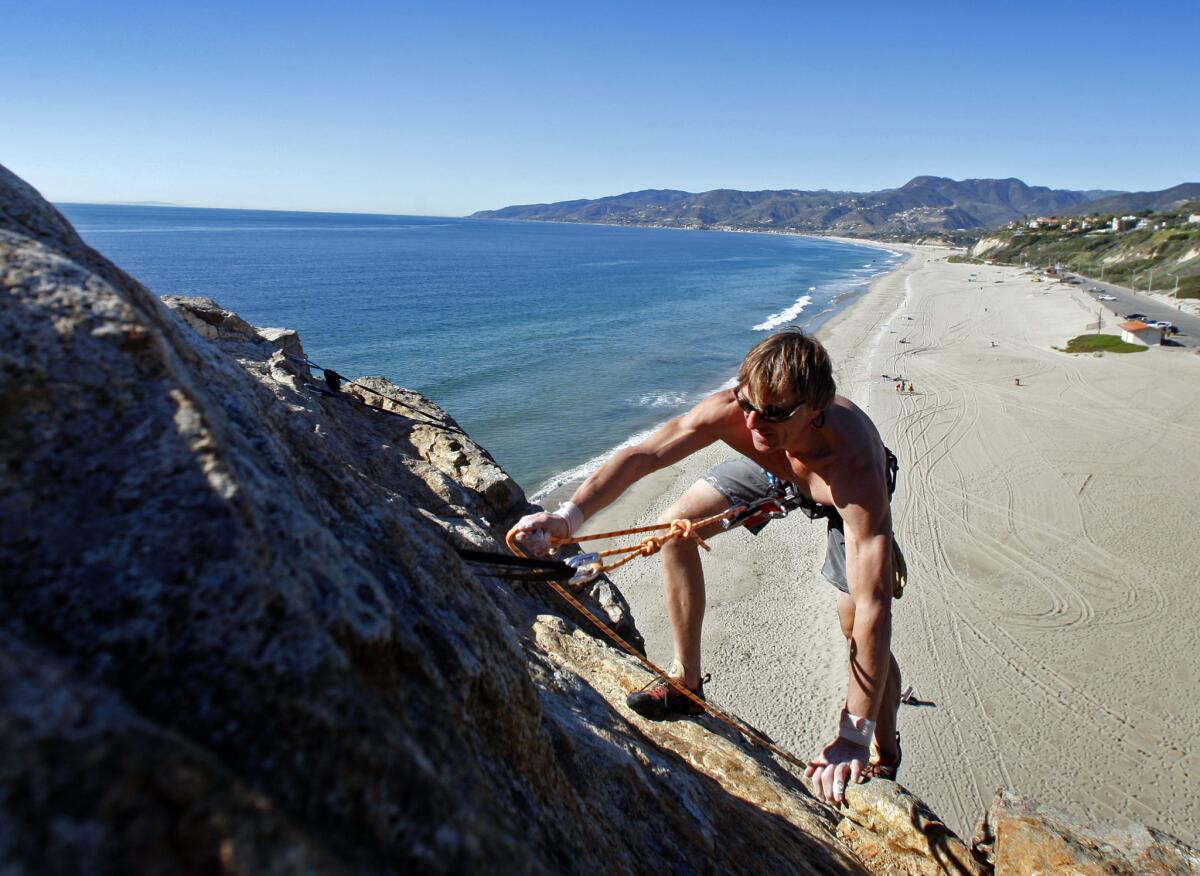
Bonus: From December to March, you might see migrating gray whales while you’re halfway up a route.
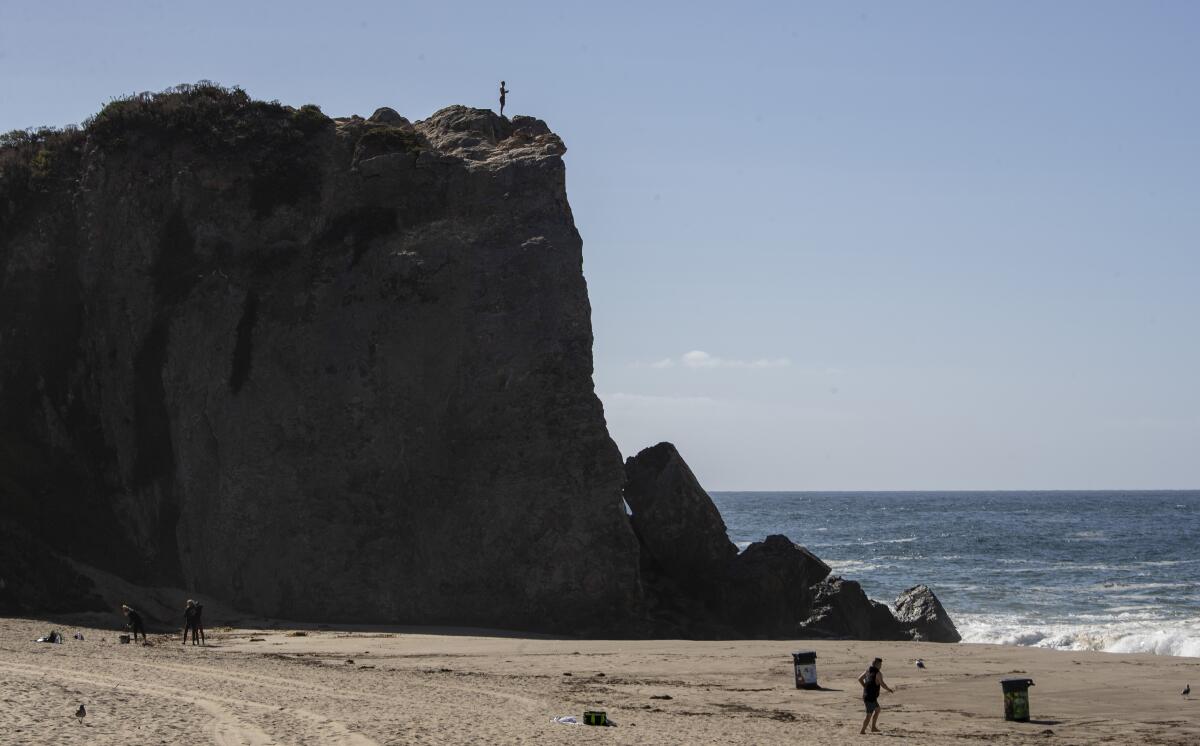
One of the best starter climbs is called Arete, which ascends around 65 feet, and has fun edges and small pockets that often allow climbers a hold of only one to three fingers. Center Route is a midrange climb that requires more technical skills and balance to ascend along a depression in the wall on thin flakes and edges.
Info: Point Dume State Beach is at Cliffside Drive and Birdview Avenue in Malibu.
Angeles National Forest
Horse Flats offers something a little more lofty, as in 6,200 feet, well over a mile above Los Angeles. It has huge granite boulders and excellent opportunities for climbing.
One of the best warm-up climbs is Thin Crack, a 15-foot ascent in the Main Area to the left of the popular B1 Boulder. You start on a large block in the main crack and layback climb up the crack about 15 feet, all the way to the top where there are lots of granite protrusions to grab onto. To get there, you’ll need to hike about three-quarters of a mile on the Mt. Hillyer Trail from the campground.
More difficult is the B1 Face, which starts on a large flake and makes long moves right to another flake and then finally up to a few sloping crimps (small holds). The final move to a large hold on the lip of the boulder leads to an easy “mantle” maneuver. Total height is around 14 feet. The harder test piece, the Sword of Damocles, follows a sloping right arete (corner) and requires a huge jump to the top lip. Bring your crash pad because many good climbers miss this move and come plummeting down.
Info: Head to Horse Flats Campground (bit.ly/horseflats), a 29-mile drive north from La Cañada Flintridge on the Angeles Crest Highway, to Santa Clara Divide Road. Take the road and drive three miles south.
Valyermo
Devil’s Punchbowl Natural Area is often described as one of the county’s hidden gems. Nestled into the northern foothills of the San Gabriel mountain range, this park is blessed with white sandstone strata, pushed skyward by the geologic activity of the San Andreas fault and other nearby fault lines.
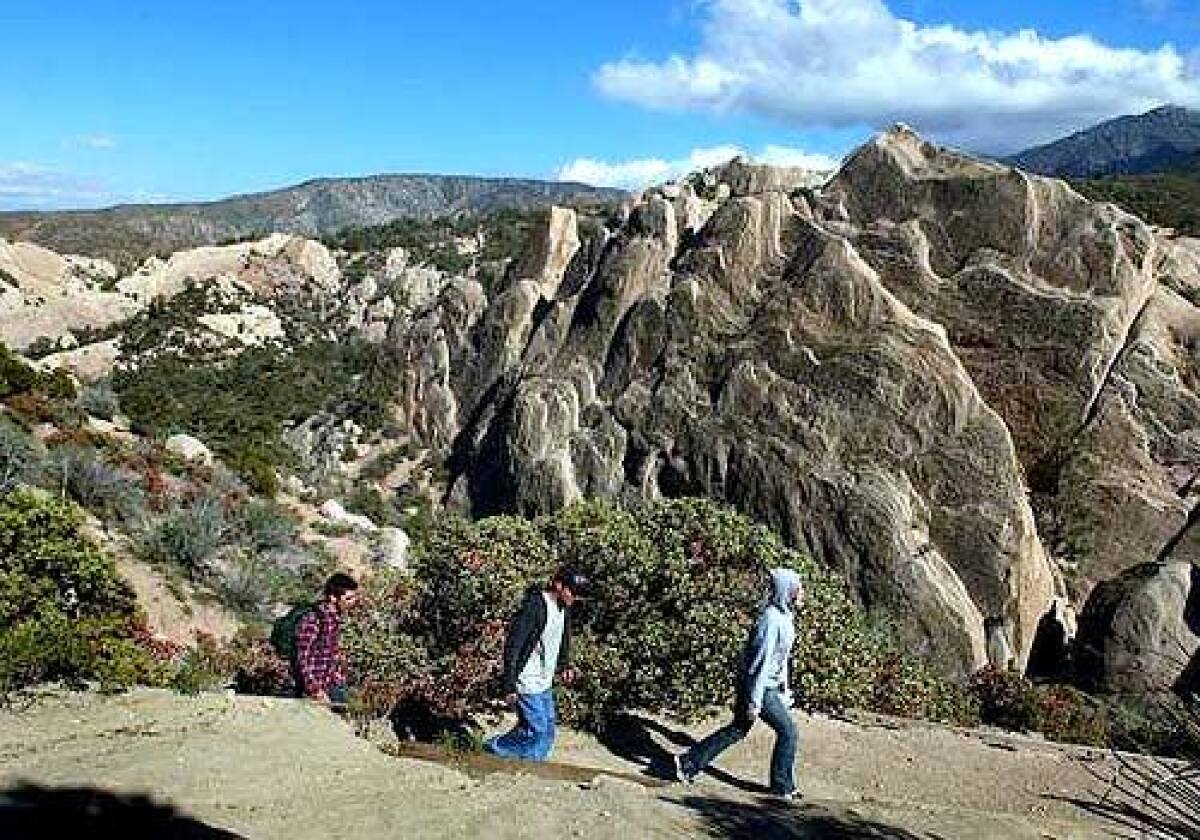
Climbers who want to work on their slab technique might want to give this beautiful spot where the high desert meets the mountains a try. Some of the popular routes in the natural area include Tenacious, Velcro and Water Cracks, all of which are on a large north-facing formation on the south side of Devils Punchbowl called Very Direct Wall. There are many single-pitch routes here as well as several multipitch routes. The wall is easy to find; it’s the first big rock you’ll see on the trail into the South Area. It rises directly from the south side of the creek.
Info: 28000 Devil’s Punchbowl Road; bit.ly/devilspunchbowlclimbs
Westlake Village
Echo Cliffs is tucked into an inner valley in the Santa Monica Mountains. The volcanic and conglomerate rocks draw lots of climbers who take on numerous and varied routes, from short and easy to long and technical, with vertical faces and steep overhangs.
A nice warm-up for the day is Miss Pacman, which you’ll find in the Grotto as you descend off the main trail into the canyon. Starting to the right of a tree, this route climbs up the middle of the block about 45 feet, following good pockets and flakes. Next to it is the appropriately named Game Boy. Nearby on the same cliff is Java Wall, which hosts some of the nicest endurance vertical climbs in the canyon.
Climbers have to hike about 45 minutes to find these routes, but it’s worth it.
Info: To get to Echo Cliffs (bit.ly/echocliffsclimb) from Yerba Buena Road, take the Mishe Mokwa Trail and follow the streambed to the climbing areas.
HOW TO GET STARTED
Being a rock star at your climbing gym doesn’t mean you can go it alone in the outdoors. REI, which offers climbing classes and stocks lots of gear, recommends these steps to start out. Learn more at bit.ly/REIrockclimbingbasics
▶ Find a qualified guide — at outdoor stores that offer classes and training, local climbing associations or indoor gyms.
▶ Identify the type of climbing you want to try, such as bouldering or top-rope climbing, which involves ropes and fixed anchors.
▶ Make sure you have the right gear, such as clothing, helmet, rock-climbing shoes, etc.
▶ Choose a route you want to conquer that’s equal to your skill level.
More to Read
Sign up for The Wild
We’ll help you find the best places to hike, bike and run, as well as the perfect silent spots for meditation and yoga.
You may occasionally receive promotional content from the Los Angeles Times.










